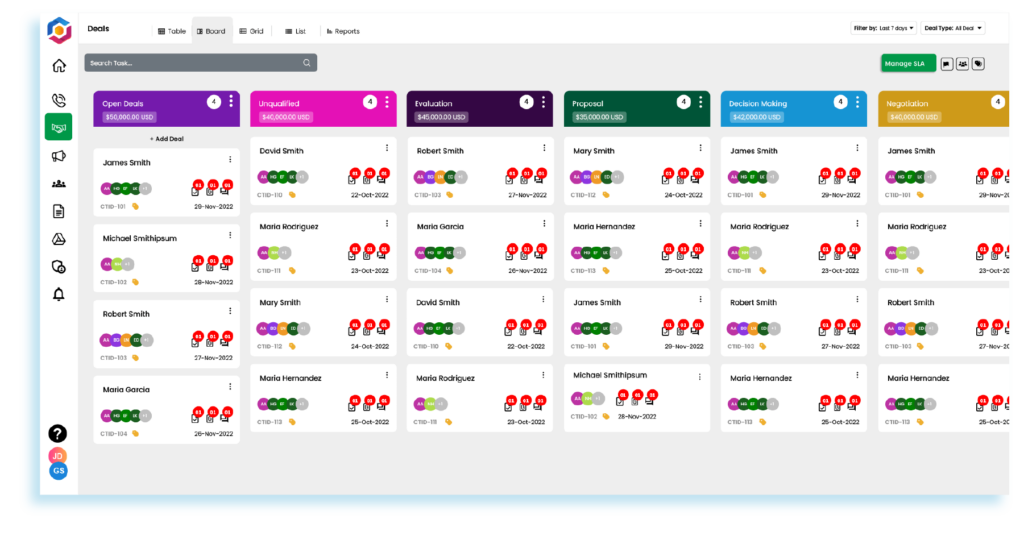Table of Contents
In the fast-paced business world, accurate sales forecasting is a critical tool for success. Whether you are a seasoned entrepreneur, a burgeoning startup founder, or a department head in a large corporation, having a reliable sales forecast template method is essential. It not only helps you make informed decisions but also provides a clear roadmap for your sales strategies.
In this guide, we will guide you through the process of “Creating the Ultimate Sales Forecast Template for All Your Needs.” By the end, you will possess a versatile and potent tool that can adapt to your specific industry, company size, and goals, making it the only sales forecast template you will ever need. So, let us dive in and unlock the potential of your sales forecasting capabilities.
What Is a Sales Forecast?
A sales forecast is a strategic estimate of a company’s expected future sales, typically for a defined period, such as a month, quarter, or year. It plays a pivotal role in business planning by projecting sales revenues based on historical data, marketing data analysis, industry trends, and other relevant factors.
Sales forecasts help businesses to set targets, allocate resources efficiently, manage budgets, and make informed decisions. They are crucial for evaluating performance, identifying growth opportunities, mitigating risks, and ensuring financial stability. A sales forecast is an indispensable tool for businesses seeking to navigate the complex and ever-changing landscape of the marketplace.
Why a Custom Sales Forecast Template is Essential
- Tailoring to Your Industry: Every industry boasts its own set of intricacies. Be it retail, technology, healthcare, or any other sector, your Sales Forecast Template needs to consider the specific factors that impact your business. For instance, retailers often grapple with seasonal fluctuations, while technology companies need to account for rapid product obsolescence.
- Scaling for Company Size: The Sales Forecast Template you use for your small startup will differ from what a large corporation requires. Your template should be scalable, adapting to your business’s growth and transformations over time.
Components of Your Sales Forecast Template
- Historical Sales Data: Start your template with an extensive section of historical sales data. It forms the bedrock of your Sales Forecast Template, enabling you to identify trends and patterns to inform your future projections.
- Market Research and Analysis: Integrate a section for market research and analysis. It facilitates your template’s ability to inform you about industry trends, competition, and customer preferences, ensuring your forecasts are grounded in real-world data.
- Multiple Forecasting Methods: Diversity in forecasting methods is crucial. For a comprehensive view of upcoming sales, your template should include a range of methods such as regression analysis, time series analysis, and moving averages.
Building Your Sales Forecast Model
- Gather Data: Initiate by gathering historical sales data, market research, and any other pertinent information. Organize and clean your data for utmost accuracy.
- Select Forecasting Methods: Choose the appropriate forecasting methods depending on the nature of your business and data. Experiment with different approaches to determine the most effective ones.
- Set Periods: Define the periods for your forecasts, whether they are monthly, quarterly, or annually. Different businesses may require distinct time limits.
- Create Scenarios: Contemplate various scenarios, including best-case, worst-case, and most likely outcomes. It ensures that your template prepares you for multiple situations.
- Review and Refine: Analyze your forecasts regularly and make any required template revisions. The more you learn from actual sales data, the more precise your forecasts will become.
The Role of Sales Automation and CRM Integration
Implementing sales automation and CRM software is a significant change for your sales process. Here are how these elements fit into your Sales Forecast Template:
- Sales Pipeline and Lead Generation: Integrate your Sales Pipeline and Lead Generation strategies into your CRM platform. It helps you track and nurture leads and opportunities efficiently, improving the accuracy of your sales forecast.

- CRM Integration: Achieve a smooth CRM integration between your Sales Forecast Template. It streamlines data collection and management, making your forecasts more dependable and up-to-date.

- Sales Funnel: Incorporate your Sales Funnel stages into your CRM software. It allows for a streamlined, automated approach to lead and sales opportunity management, ensuring none of your potential sales slip through the cracks.
Final Thoughts
A personalized Sales Forecast Template is an invaluable tool for any business. It empowers you to make informed decisions, allocate resources efficiently, and plan for growth. By customizing your template to suit your industry, company size, and specific goals, you create a dynamic tool that evolves alongside your business.
Remember that sales forecasting is an ongoing process. Stay flexible, consistently refine your template, and you will be well-equipped to navigate the ever-evolving business landscape. With the YoroCRM Sales Forecast Template, supported by sales automation, CRM integration, and a well-managed sales funnel, you will chart a path to success, ensuring your business thrives in any market condition.




